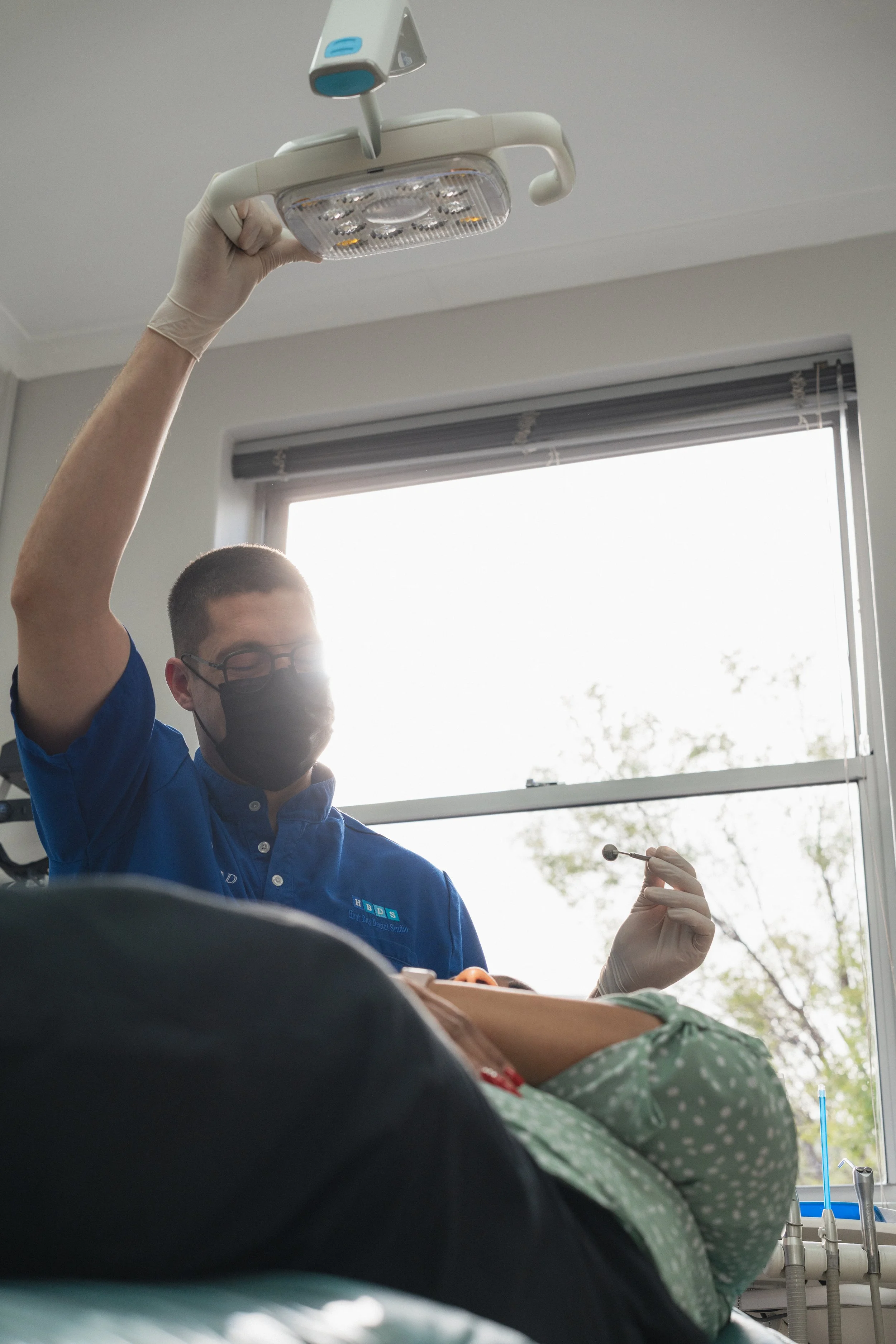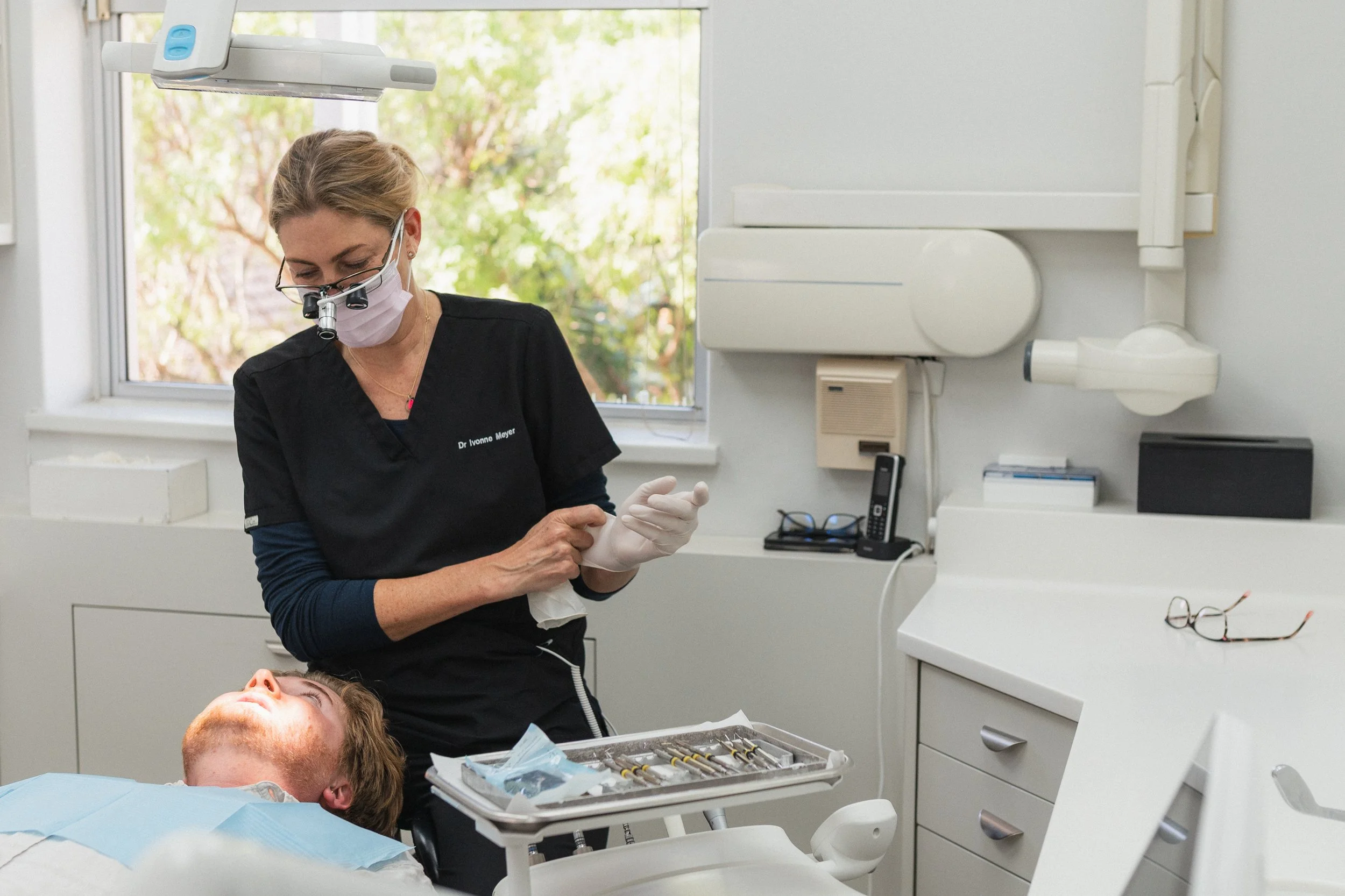Minimalistic Procedures
Minimally invasive dentistry (or minimally hazardous dentistry) focuses on prevention, strengthening and minimal dentist intervention. The latest scientific advances, modern tools and techniques at HBDS allow our dentists to perform minimal treatment to avoid removing more of the tooth structure than is necessary to restore it to its optimal condition.
In clinical practice, as soon as dentists cut into a tooth, they have sentenced that tooth to a lifetime of being repaired, replaced and treated with progressively aggressive and costly techniques. At HBDS, we use minimally invasive techniques for early problem detection, decay removal, and repair. We endeavour to minimise the loss of tooth structure during the restoration process, and we use long-lasting dental materials that conserve the maximum tooth structure, reducing the need for future repairs.
Conservative White Fillings
White or tooth-coloured fillings are dental fillings that restore and mimic the natural appearance of a tooth. The strength of the adhesion between the material and the tooth allows your HBDS dentist to limit the removal of tooth structure compared to traditional fillings. Conservative white fillings are the most critical aspect of minimal intervention and a safer and healthier alternative to conventional silver amalgam fillings.
In addition to rebuilding teeth that have fractured or decayed, tooth-coloured fillings are used to replace old amalgam silver fillings. The process involves the mastery of dental composite, a mouldable tooth-coloured material with a paste-like consistency made from glass resins and fillers.
Dentists usually use crowns to restore a tooth, but porcelain inlays and overlays have one significant advantage - they do not require removing as much of the tooth structure. Inlays are similar to fillings, except they are custom-made from porcelain and fit the cavity in your tooth. They are thus stronger, longer-lasting, and able to preserve tooth structure. We choose overlays for more substantial reconstruction, and they cause less damage to your tooth structure than conventional crowns.
Inlays and overlays
Digital CAD-CAM
At HBDS, we use the latest and most technologically advanced equipment. We use Sirona's new PRIMESCAN unit to design and build your conservative bonded inlay or overlay restoration in one dental visit, facilitating minimally invasive dentistry.
This state-of-the-art tool kit uses the same principles as conventional inlays and overlays, 3D photography and CAD-CAM technology to create an ideal restoration. Using this technology means you don't have to wait – we can complete your conservative, biocompatible porcelain restoration during the same appointment.
Bonding, or direct bonding, usually refers to restorations done on the front teeth. It is an inexpensive and effective fix for small chips or cracks in the teeth and for closing small gaps. With modern materials and techniques, direct bonding has become the ideal treatment for early erosion and minimally invasive dentistry. This technique means we can often restore your teeth to their original shape and function without cutting them. Your HBDS dentist will let you know if you are a candidate for dental bonding.
Bonding
Magnification is a magical innovation that has allowed us to improve our dentistry by being able to see on a much bigger and better scale. At HBDS, we all use magnification in the form of Loupes, and now we can detect lesions sooner, get a clearer picture of a problem, and perform our dentistry with even more skill.
Magnification
Orthodontics and Clear Aligners
Not every case of crooked teeth needs complete orthodontic treatment and referral to an orthodontist. At HBDS, we offer minor orthodontic clear aligners to achieve ideal treatment outcomes. When we come across a situation where the use of minor orthodontics will decrease the amount of dental restorative treatment, this becomes our first choice.
If complex tooth movement is required, we have a strong network of like-minded orthodontists to refer you to.
Many people grind their teeth at night, which can cause severe and expensive damage, leading to the need for crowns. Grinding, or bruxism, often begins in your teenage years or early 20s, and if we detect it in time, we can correct it before more invasive treatment is required. At HBDS, we create comfortable bite splints for you to wear at night or during stressful times when most teeth-grinding occurs.
Bite splints
Remineralisation restores the minerals in teeth and repairs associated damage, such as erosion and early decay. The careful use of fluoride plays a critical role in this process.
Remineralisation
When a decayed tooth cannot be remineralised, your HBDS dentist may use air abrasion. This technique is used instead of a traditional drill and may not require anaesthesia. It resembles microscopic sandblasting and uses an airstream with super-fine abrasive powder.
Air Abrasion
Dental sealants protect teeth from bacteria that cause decay. Tooth sealants, usually made of plastic resin, fit into the grooves and depressions of the tooth and act as a barrier, protecting against acid and plaque.











